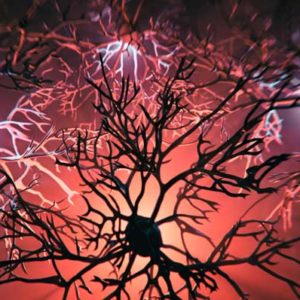Neurology Now
Monkey Business: Need help with daily living? A trained capuchin monkey might be the solution.
December/January 2017
Volume 13, Issue 6, p 8–9
Corrine Peters was diagnosed with multiple sclerosis (MS) in 1986. Two years later, she was using a scooter. Twenty years later, she had trouble standing on her own and completing routine tasks such as moving laundry from the washer to the dryer. Living independently was becoming increasingly difficult.
Then, one evening in 2006, she and her daughter saw a news story about Helping Hands, an organization that places service monkeys with people who need help with everyday tasks. As soon as the segment finished, Peters’ daughter called the organization to inquire about a monkey helper for her mom.
After an extensive application process, including six months of interviews with family members and caretakers and a video tour of Peters’ home, a trainer from Helping Hands arrived on Peters’ doorstep with Glassie, a six-pound capuchin monkey.
CAPUCHIN CARE PARTNERS
Helping Hands began as a research project at Tufts University in 1979, says Angela Lett, interim executive director of the organization. “We thought if we can train dogs to help blind people, perhaps we could train monkeys to help people with mobility and dexterity problems,” she says.
Monkeys, they knew, are highly intelligent and have well-developed fine motor skills. The trick was finding a species small enough to live easily in a home environment. The researchers settled on capuchin monkeys, who weigh six or seven pounds as adults. The monkeys are quick learners, able to manipulate objects, and not typically aggressive, making them suitable service animals. Capuchins also have a low incidence of disease—and they can live up to 45 years in captivity.
FIRST CASE
Helping Hands placed its first monkey with Robert Foster, who had become quadriplegic after a car crash four years earlier. The monkey was soon loading eight-track tapes, scratching itches on Foster’s face, and turning on the stereo when directed. The pairing was so successful it continued for the next 28 years until Foster’s death in 2007.
Fortified by this early success, Helping Hands became a nonprofit organization in 1983 (http://monkeyhelpers.org). Since then it has placed approximately 200 monkeys—free of charge—with people with spinal cord injuries, MS, and other conditions. Today, the group gets its monkeys from a closed colony in Massachusetts and places six to eight monkeys every year.
YEARS OF TRAINING
The monkeys are raised from infancy with a foster family to become accustomed to living in a home. At about age 8, they are transferred to “Monkey College” in Boston, where trainers work one-on-one with them—a process that can take up to five years.
Capuchins are curious and easily distracted, so the first stage of training is extremely basic. “Trainers will take an object, put it on the floor, and encourage the monkey to touch it. When the monkey touches the object, it is rewarded with a lick of peanut butter or hummus. That’s how it begins.”
From there, the tasks become more complicated. “We teach them to insert CDs into CD players, fetch items, turn pages in books, and flip light switches,” Lett says. “The hard part is teaching them to flip it just once!” Like toddlers, once the monkeys learn how to turn the switches on, they can’t resist turning them on and off incessantly.
QUALITY OF LIFE BOOST
Once Glassie was placed with Peters, its trainer stayed for a week to help the animal acclimate and to train it in the new environment, a process that continued daily via video calls over several months.
Since moving in with Peters, Glassie has learned to take off Peters’ shoes when her feet become swollen after long periods in her wheelchair. She also retrieves objects like the remote, and helps Peters get mail from her mailbox—tiny acts of service that help improve Peters’ quality of life.
SHIFTING ATTITUDES
For many recipients, monkeys help change their perspective, says Erica Noyes, development and communication associate at Helping Hands. “[Having a monkey] puts the recipient back in control. The monkey doesn’t see the person as injured or ill. It sees him or her as its protector and boss.”
For Peters, Glassie is most of all a source of companionship. “We take care of each other. She grooms my head, I groom hers. She picks up the things I drop. She snuggles in my lap. I wheel close to a bush so she can eat some tasty bugs. Every day is a new adventure.”
© 2017 American Academy of Neurology
“Neurology Now” has been renamed “Brain and Life”


